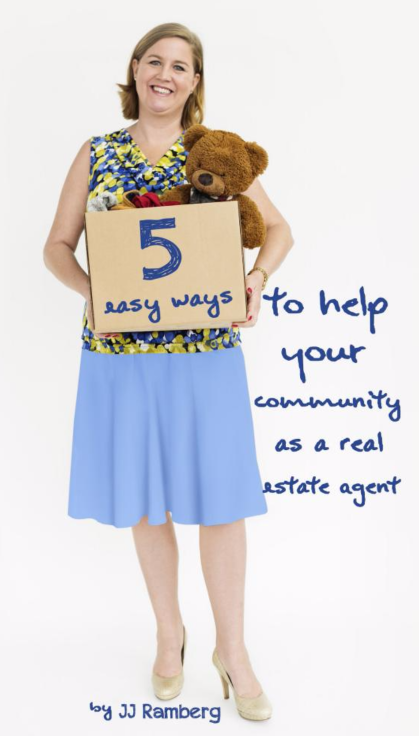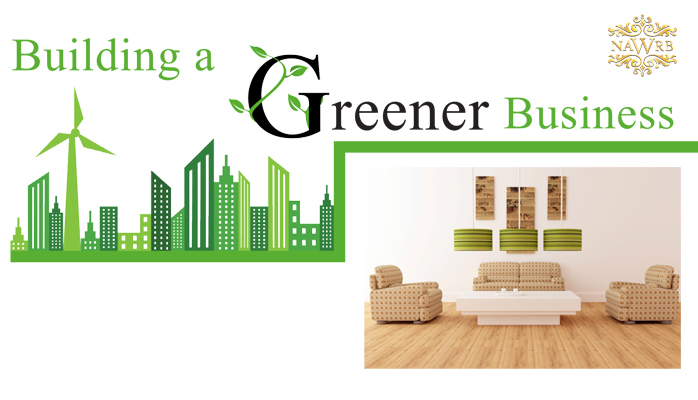The Sheats-Goldstein Residence is a geometrical gem of a home designed by architect John Lautner in the early 1960s. The famous Los Angeles residence seems at once a part of nature (it literally juts out from the hillside) and the future (its sharp glass-framed angles and custom furniture would be at home in a sleek spacecraft.) It is known as one of the premier examples of Lautner’s work.

Know an Incredible Woman Preserving the
Quality of Life During COVID-19?
Submit your story today!
Read More

Consulting & Branding Opportunities
Grant your business access to insider,
proven knowledge to improve the quality of your procured
services and maximize business performance.

If you need D&I
Contact Us!
A Team Focused on Bring Diversity and Inclusion to Every Level
Learn More

#1 Top Real Estate Influencer
Desiree Patno
Diversity & Inclusion, Quality of Life, Know the Rules of the Game ®
Your Next Event
Grow Your Business
NAWRB: An SBA Resource
NAWRB is listed as a women-owned business resource for the SBA.
Check It Out
NAWRB Aging Population
Help Protect Elders
from Financial Abuse
Over $36.5 billion a year is lost annually in the U.S.
Prevent Financial Abuse

Women's Homeownership:
Dream. Stability. Sanctuary.
Life often presents us
with unplanned disruptions.

AI Technology
with
a Human Touch
Is
The Perfect Balance


NAWRB Women's Global Resource Center
A women’s depository for vendors & clients to grow their diverse spend & increase women’s employment at all levels within the housing ecosystem.

Category Archives: Home Design
5 Easy Ways to Help Your Community as a Real Estate Agent
 I remember as a kid when I ordered my first Ben & Jerry’s ice cream and when I bought my first body lotion from The Body Shop. Those were the moments when it became very clear to me that business and doing good could go hand in hand. From then on I was always incredibly interested in the idea of socially responsible businesses.
I remember as a kid when I ordered my first Ben & Jerry’s ice cream and when I bought my first body lotion from The Body Shop. Those were the moments when it became very clear to me that business and doing good could go hand in hand. From then on I was always incredibly interested in the idea of socially responsible businesses.
It wasn’t until I was in my 30’s that I had the idea for a socially responsible business I personally wanted to start. Today, my company, Goodshop, is focused on two things. First, we want to save people money. Second, we want to ensure good causes continue to have the funding they need to continue, whether those are personal causes like funding a health emergency or a national cause like the Humane Society of the United States.
As we’ve built Goodshop, I’ve seen the launch and growth of so many other socially responsible companies, from TOMS Shoes to Warby Parker, that have had such a big influence on both their consumers and the business world in general. Our model is to give away a percentage of our revenue, and I do realize that not every company is in the position to do that. But, everyone can do something. Since most entrepreneurs are already familiar with ideas such as volunteering for local causes, I want to discuss five small and easy ways you, as a housing ecosystem professional, can incorporate “doing good” into your business practices.
1. When you’re working with someone who is moving out of their house, encourage them to recycle or give away everything they don’t want to bring with them. The company Givebackbox.com is a service which will provide you free shipping of your used stuff to a partner charity that they work with. Simply take that box out of the recycling pile, fill it with your used clothes, print out a label on Givebackbox.com and your old clothes will be on their way to a new home. You gave that box a second life too!
2. Create a partnership with your local Goodwill or other organization to pick up old furniture or other items that the family may not want to move with them. This is an added benefit that you can bring to your clients as it’s one thing they can check off their to do list.
3. Start a campaign for a cause in your community that provides homes for people in need. This way, as your clients are buying things for their new homes, they could also be helping someone less fortunate than themselves.
4. Do you bring cookies or snacks to your open houses? Hire a local student to bake them for you. This will give them an opportunity to make a little money and teach them the experience of starting a business.
5. Volunteer to take a student from an economically underserved area around for the day with you. Many kids do not have the opportunity to see what it’s like to do a particular job day to day. Give them some insight into what a career in real estate looks like. You can have a positive impact on a child’s life and studies.
JJ Ramberg
Founder, Goodshop.com
Building a Greener Business
With environmental issues becoming a hot topic around the world, many consumers and business owners are looking into different options as a way to incorporate green building designs and construction into their companies and homes. Continue reading →
Update Your Home for Less
Many of us want to update our homes but need to do so on a budget. Tiny adjustments and inexpensive additions will improve the look and feel of our homes. From adding flowers to utilizing mason jars, creative alterations will make your home look brand new.
Coming To A City Near You: Micro-Apartments
With the scarcity of affordable housing in metropolitan areas, are micro-apartments the future of housing? The tiny home movement and creation of micro-apartments has taken international cities by storm. The rise in micro-living can be attributed to a lack of available land for housing, surges in population, and booming economies in urban areas. Cities such as Tokyo and Hong Kong have experienced the newest wave in housing…are U.S. cities next?
Upgrade your Home with these Unique Flowers
Celebrate spring and spruce up your home with a variety of flowers that are not only effortless to maintain but beautiful. Bright colors and interesting shapes will transform your front yard and backyard into a wonderland that costs very little when compared to other landscaping projects that may require professional help.

 Login
Login







